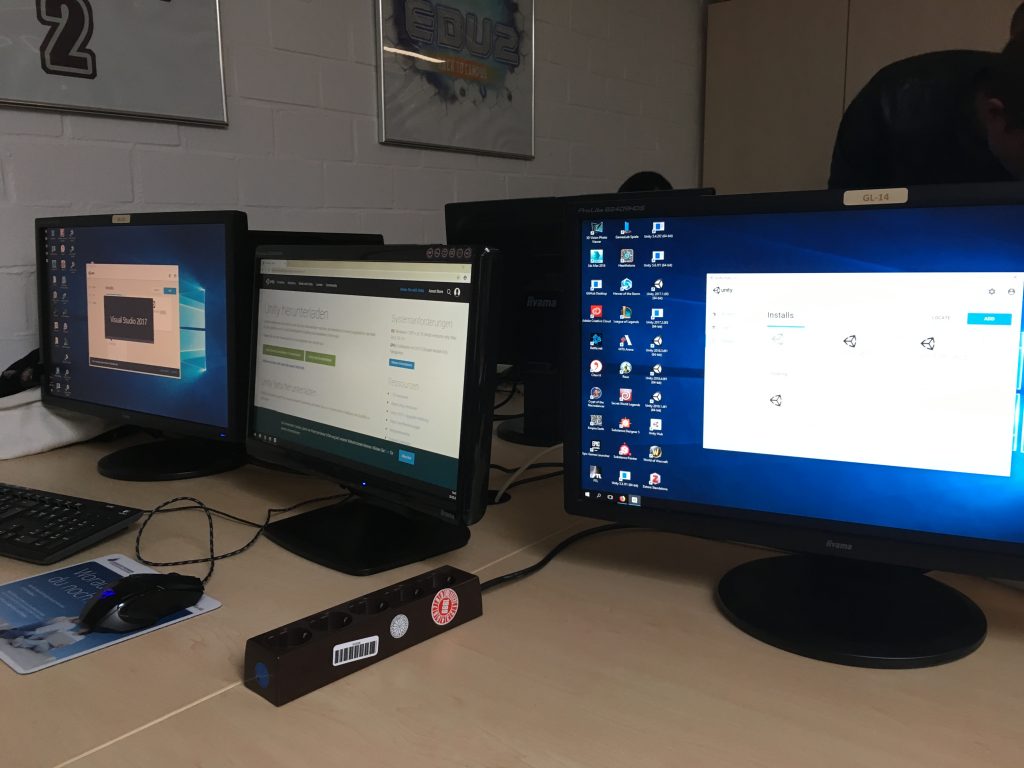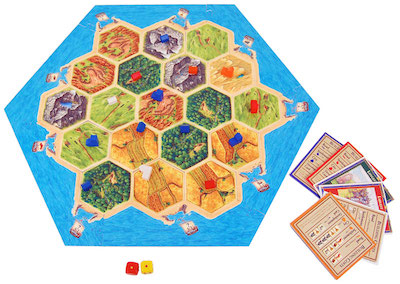Despite it being a public holiday, In Via was still serving breakfast, though they opened slightly later, at 8:00. (Germans sure do seem to wake up early.) After eating said “late” breakfast and getting prepared, it was time to set out to the university for the game jam. We were running a little late, so Stephen called a cab for himself, me, and some others. It was a large cab, with two rows of back seats, so we were all comfy and got where we needed to be. I still don’t trust the cabs here, not after Michael’s cab story.
First, we split into myriad groups of two, where we’d each come up with an extremely bare-bones pitch or idea, which we would then pitch to two other groups of two who would also pitch their ideas. We’d then combine / adopt ideas as needed and come up with a decent, actual game pitch. Finally, we’d have three votes and give them to our favorites, deciding which ones would be dropped.
I was the one who did the pitch at the front of the room for our group. We had in mind a game temporarily titled “Diners, Drive-Ins, and Warp-Drives,” a poorly executed play on Guy “F L A V O R T O W N” Fieri’s food review TV show. We called it DDWD (Dee-dee-dub-dee) for the very short time we still had the pitch before it was murdered in cold blood by a lack of votes.
The idea was to have splitscreen multiplayer where one player is a waiter, and the other is a chef. The waiter would have to take orders to pass to the chef, clean up spills, deal with rude customers, etc. with the mouse or controller. The chef would take orders from the waiter and make the food accordingly with the keyboard / another controller, then pass it back to the waiter who would finally serve it. I, personally, think it was a good idea that was worth a shot but oh well the votes said otherwise. 🙁
Instead, I was shifted onto another interesting game, Beat the Boss, a boss rush game initially intended to have multiple classes each with an ability that synergies with the others, such as an ice man who freezes people and a fire man that does extra damage if the enemy is frozen. We later down the line decided that was out of scope. The core gameplay remains unchanged, however; the goal of Beat the Boss is to beat the boss (hopefully we’ll even have more than one boss to beat!).
Two players choose from two classes (hopefully four classes, maybe even four players, later down the line if time allows) and charge into an arena to take down a big boss, armed with only a sword, a dash / dodge roll, and a special ability. Players die in one hit, but can be revived by their friends, making each fight a careful balancing act of staying safe, beating the boss, and keeping your friends in the fight should they become deceased.

I don’t feel like I got much done that first day. Most of the time spent was planning out the game, which I did feel I participated in, and waiting for the lab computers to do literally anything. Even when the computers finally finished doing whatever it may have been, due to the early state of the game, it was difficult to test things or visualize what needed to be done. I felt like an intern mixed into the developers of a brand new game.

I did add in a very, very rudimentary basic attack, the sword swipe; on click, a hitbox appears in front of the player, about as long as them, and about twice as wide. It’s got a nice rhythm to it, last I checked, but I can’t tell if the rest of my team is headed down the “press the button in rhythm” route like I am or the “RAPIDLY SLAM THE BUTTON TO SWING AT SUPER SONIC SPEEDS” route. This was largely possible due to Ingo’s excellent code stubbing.
I had headed home early due to lack of things to do at the moment, but my team continued to progress, and by the evening, we had movement, rolling, and even an adequate camera that simulated what the game was generally going to look like. Despite the relative lack of technical progress, getting the kinks worked out early is always preferable to getting them worked out later, and breaking everything in the process.
